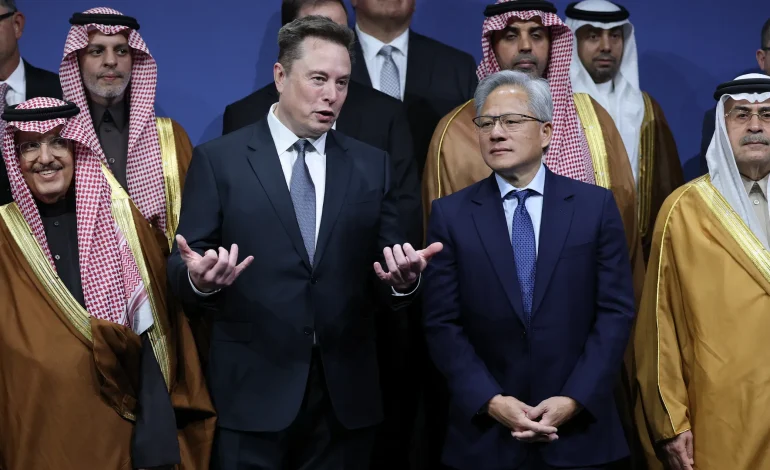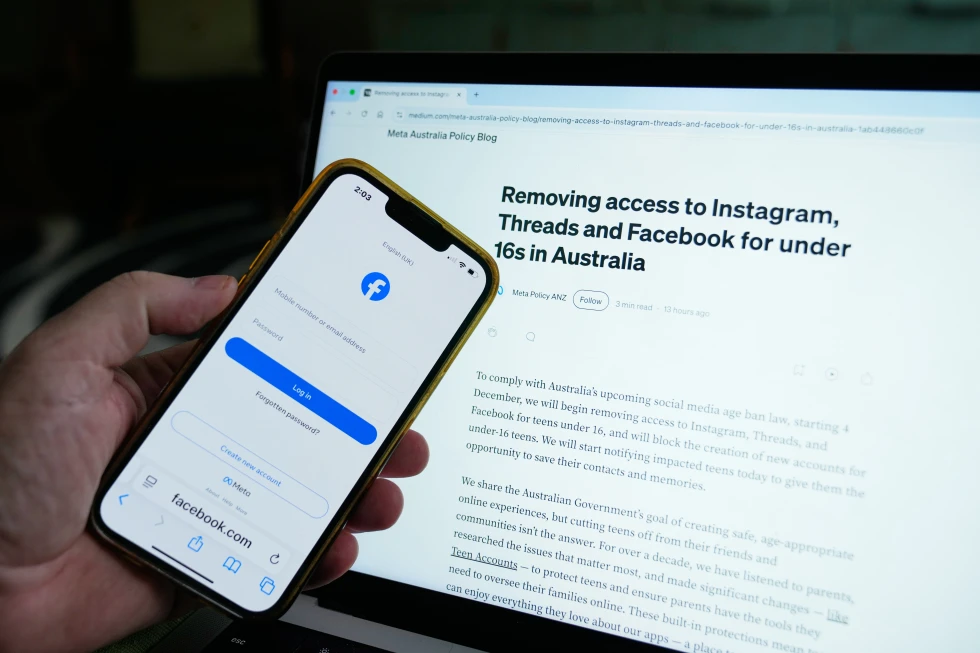How the Middle East Became Ground Zero for the AI Boom

With input from Axios, Bloomberg, and Reuters.
The Middle East isn’t just writing big checks for AI anymore — it’s rapidly turning into one of the world’s most important places to actually build AI. Between Saudi Arabia and the United Arab Emirates, the region is positioning itself as a key hub for data centers, chips and next-gen AI research, with US tech giants lining up to get involved.
At the same time, all of this is wrapped in geopolitics: Washington wants Gulf money and energy behind American AI systems, not China’s.
A lot of the latest action revolves around Humain, a Saudi AI and infrastructure firm backed by the country’s powerful Public Investment Fund. During the US–Saudi Investment Forum and Crown Prince Mohammed bin Salman’s visit to Washington, a flood of deals was unveiled:
- xAI (Elon Musk)
Signed a framework deal with Humain to build low-cost GPU data centers in Saudi Arabia and roll out its Grok AI models across the kingdom. One project includes a 500-megawatt facility. - AMD & Cisco
Partnering with Humain to deliver up to 1 gigawatt of AI infrastructure by 2030 — essentially building a massive AI computing backbone. - Nvidia
Humain plans to deploy up to 600,000 Nvidia GPUs in Saudi Arabia and the US over three years, including projects focused on physical AI and Arabic-language AI. - Qualcomm
Working with Humain on a data-center push and setting up an AI engineering center in Riyadh, as part of a plan to deploy around 200 megawatts of data center capacity. - Amazon Web Services
Teaming up with Humain to install up to 150,000 AI accelerators for an “AI Zone” in Riyadh. - Adobe
Collaborating with Humain to build culturally aware AI models tailored for Arabic speakers, using Qualcomm-powered data centers under the hood.
That’s tens of billions of dollars’ worth of infrastructure in just a handful of announcements.
Two main reasons: energy and speed.
AI data centers are insanely power-hungry. The US grid is already straining under AI demand, and experts warn of energy bottlenecks in the next 3–5 years. Gulf states, on the other hand, have:
- Huge energy capacity (including plans for more gas, renewables and nuclear);
- The political will and cash to build new infrastructure fast.
As one AI policy expert put it, the Middle East is becoming a bridge for the global AI build-out while the US works through its own energy and infrastructure constraints.
For Saudi Arabia and the UAE, AI isn’t just a tech trend — it’s part of a national survival strategy.
- Saudi Arabia has reportedly targeted $40 billion in AI investments under its Vision 2030 diversification plan.
- The UAE has its own flagship AI champion, G42, which has moved away from Chinese ties and toward US partners like Microsoft and OpenAI.
Both governments see AI data centers, chips and cloud services as the next iteration of being an energy hub: instead of just exporting fuel, they want to export compute.
There’s a catch: the US is willing to fuel this AI build-out only if the hardware and know-how don’t leak to China or Russia.
The Commerce Department has authorized the export of advanced Nvidia Blackwell chips — the equivalent of up to 35,000 GPUs — to:
- G42 in the UAE;
- Humain in Saudi Arabia.
These approvals come with strict security and reporting requirements to ensure the chips stay where they’re supposed to. That follows earlier moves:
- G42 agreed to divest from Chinese tech giant Huawei, clearing the way for a $1.5 billion partnership with Microsoft.
- US officials have made it clear: if Gulf countries want the best American AI hardware, Chinese vendors like Huawei have to be kept at arm’s length.
Even so, China hawks in Washington remain nervous, given the region’s deep ties to Beijing and previous reliance on Chinese telecom infrastructure.
On the Emirati side, G42 is racing to build some of the world’s largest AI infrastructure with U.S. partners:
- It’s planning a giant data center network in the UAE.
- Phase one, called “Stargate UAE,” is set to go live in 2026.
- Partners include Nvidia, OpenAI, Cisco, Oracle and SoftBank.
The US has now green-lit advanced chip exports for G42 projects, after months of negotiations and assurances on security and data handling.
So why is the Middle East suddenly everywhere in AI?
- Money: Sovereign wealth funds are pouring tens of billions into AI.
- Energy: They can power huge data centers when the US grid is strained.
- Speed: Fewer local regulatory bottlenecks mean projects move quickly.
- Strategy: The US wants allies running on American AI stacks, not Chinese ones.
- Ambition: Gulf states want to be producers in the AI economy, not just customers.
But it’s also a balancing act. Saudi Arabia and the UAE want to stay close to Washington and Beijing. The US, meanwhile, is trying to expand its AI footprint in the region without supercharging China’s.
For now, one thing is clear: with massive chip orders, giga-watt data centers and big-name US partners, the Middle East has moved from the sidelines to the center of the global AI race.









The latest news in your social feeds
Subscribe to our social media platforms to stay tuned